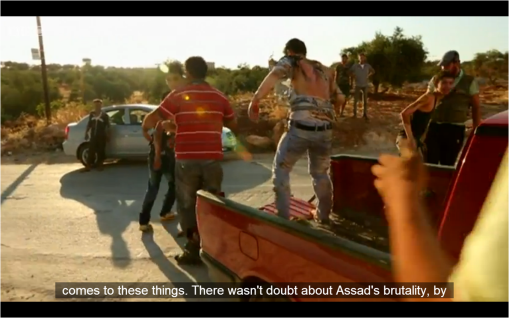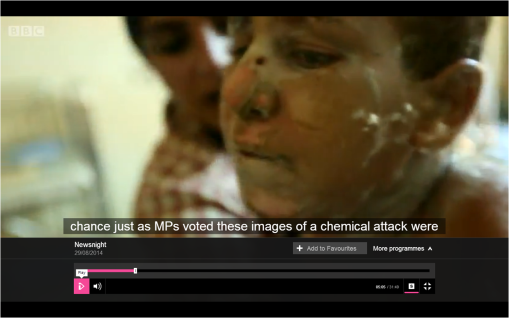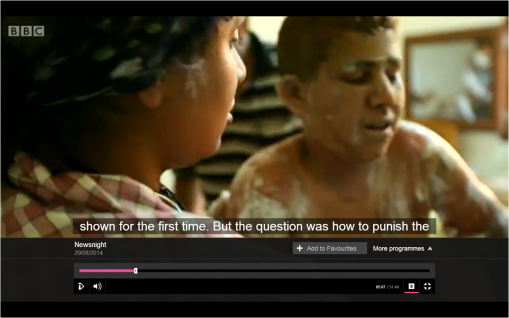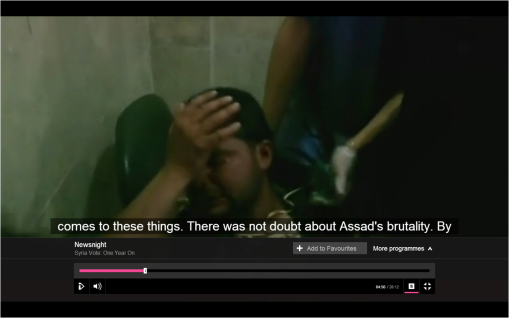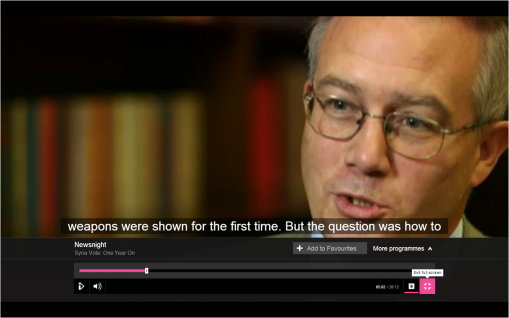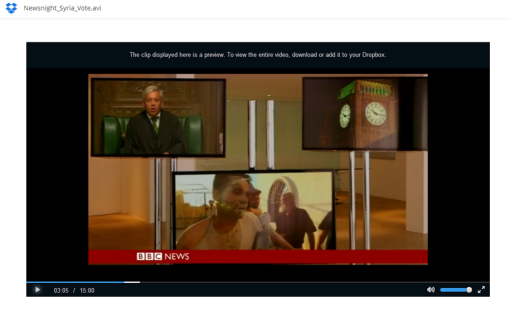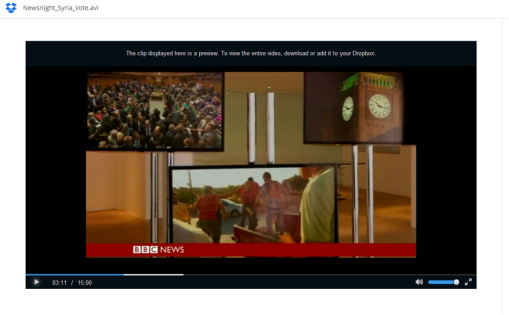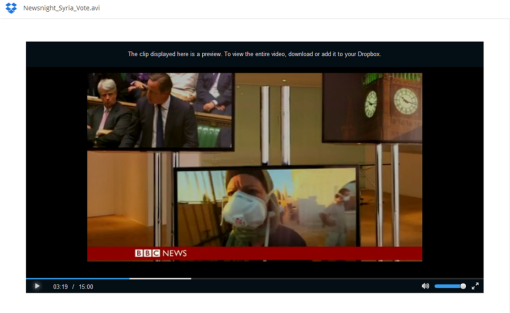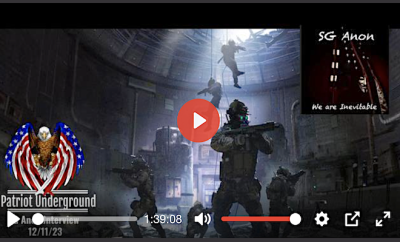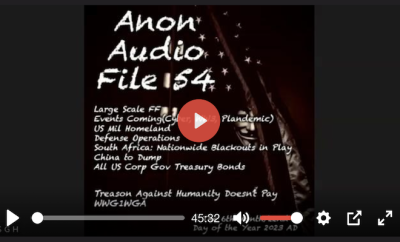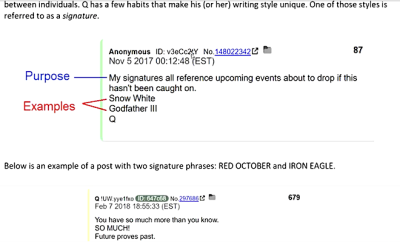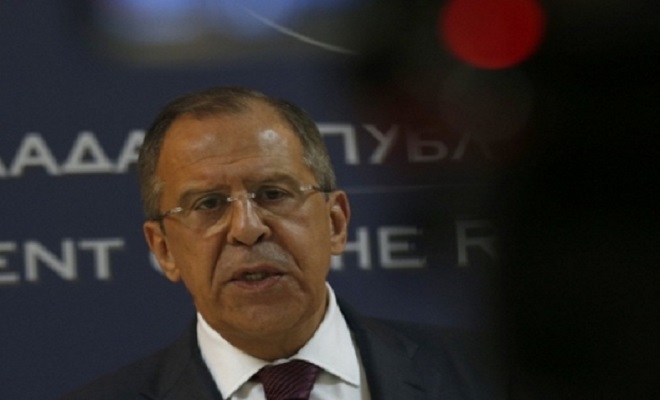
WW3
WW 3 Middle East Update: Featuring Lavrov, Brandon Turbeville and BBC Fake Images
Lavrov, From RT :
US-led coalition against ISIS in Iraq, Syria ‘mistake’ – FM Lavrov
The US-led campaign against Islamic State militants in Iraq and Syria is a “mistake,” Russian Foreign Minister Sergey Lavrov said in an interview with Bloomberg TV.
“Unfortunately, when the Americans announced this crusade against ISIL in Iraq and Syria, they never came to the Security Council, they just announced the coalition and they announced that the Iraqi government gave its consent,” Lavrov told Bloomberg TV in an interview.
“I believe it was a mistake. I think that just an obsession with the personality of [Syrian President Bashar] Assad is not bringing any good to the common cause of fighting terrorism.”
he US-led campaign against Islamic State militants in Iraq and Syria is a “mistake,” Russian Foreign Minister Sergey Lavrov said in an interview with Bloomberg TV.
“Unfortunately, when the Americans announced this crusade against ISIL in Iraq and Syria, they never came to the Security Council, they just announced the coalition and they announced that the Iraqi government gave its consent,” Lavrov told Bloomberg TV in an interview.
“I believe it was a mistake. I think that just an obsession with the personality of [Syrian President Bashar] Assad is not bringing any good to the common cause of fighting terrorism.”
Sergey Lavrov's live Interview for http://t.co/NY9eOe7rZV / Интервью С.Лаврова для http://t.co/NY9eOe7rZV pic.twitter.com/nr4Mc7T1Sz
— MFA Russia (@mfa_russia) June 2, 2015
Russia is not against the actions of the international coalition against Islamic State (formerly known as ISIS or ISIL), but bombardment of the militant-controlled areas of Syria without the approval of Damascus authorities is a mistake, Lavrov said.
When US authorities say that Assad cannot be considered as a legitimate partner, “we always remind them that he was perfectly legitimate when we went to the Security Council to adopt the resolution of Syrian chemical weapons disarmament,” Lavrov said.
Russia’s FM added that it is not up to US government to decide who should be in power in Syria.
“We certainly believe that only a political settlement is possible for Syria, and we also believe that the Geneva communique three years ago is the basis [for this],” Lavrov said.
Those of the “outside players” have to decide what is a bigger threat: “the personality of Syrian president, or ISIL and [similar groups],”said Lavrov. By “outside players” Lavrov appeared to be referring to the US and EU authorities.
Russia is not against the actions of the international coalition against Islamic State (formerly known as ISIS/ISIL), but bombarding the militant-controlled areas of Syria without the approval of the authorities in Damascus is a mistake, Lavrov said.
“We are not against what the coalition is doing because they are trying to weaken terrorists, but we [Russia] have been contributing to the fight against this group [ISIS] long before this coalition has been created.”
Lavrov stated that Moscow has been providing weapons to the Iraqi government and “Americans were reluctant to do this because of some conditions to be fulfilled by Iraqi authorities.Everyone understands and publicly admits that just airstrikes are not going to do the trick,” he said.
The Russian foreign minister said that the jihadists may move “very far” away from Syria and Iraq. “We want to cut the financial links of ISIL… We need to cut off any oil purchases on the territory controlled by the terrorists. I believe we need to take another step in Security Council and find a mechanism to find out who is buying this oil.”
Lavrov added that the international community needs to find not “the symptoms, but the root causes.”
from UCYTV:
Huge Explosion In Latakia Reveals US HRW Hypocrisy
On the chemical weapons question, however, the mainstream Western press was silent.
This is despite the fact that the media clearly sees the sign of yellow smoke as the indication of chemical weapons use, which it subsequently uses to blame Bashar al-Assad and gin up support for US invasion when those explosions take place in certain areas or have deleterious results for the death squads. After all, when a missile/explosion was detonated in Dara (Dera’ah), Dr. Annie Sparrow, a “health activist” married to the head of Human Rights Watch, Kenneth Roth, claimed that a chlorine-based chemical weapon had been detonated by the Assad regime (who else?). Sparrow’s photograph showed a plume of yellow smoke that looked identical to that in Latakia.
https://www.youtube.com/watch?v=9xBrYIN8-rc
Indeed, her husband’s HRW organization has also made statements suggesting that yellow colored smoke was an indication of the use of chlorine-based chemical weapons.
Yet, while there was widespread condemnation (despite a stunning lack of evidence and plenty of evidence to the contrary) of the Assad regime as a result of her claims, why isn’t Sparrow or HRW condemning the terrorists who detonated a missile/chlorine based weapon in Latakia?
After all, one can see from the pictures posted on Twitter that the explosions were almost identical.
. @nadimhoury @Syricide < has a point, this (NO2) is exactly what #HRW describe as chlorine cc @ShoebridgeC pic.twitter.com/RimK7y1swE
— ifriqiyah (@ifriqiyah) May 25, 2015
The answer is that, much like the Western press, NATO, and the myriad of NGOS, Foundations, and think tanks across the Western world, Human Rights Watch is nothing more than a misleading front group for the imperialist powers that seek the destruction of sovereign states the world over.
To be clear, it is a matter of intense speculation as to the nature of the explosion. There is no consensus as to what the source or the material of the explosion might be. The possibility of an improvised chemical weapon, a missile, or even a crashed drone are competing theories.
Still, it must be remembered that HRW was recently caught in a brazen attempt to use a picture of the US bombing of Ayn al-Arab to claim that Assad had destroyed a Syrian city with barrel bombs.
While the attack in Latakia is clearly the work of Western-backed terrorists (Latakia is firmly in government control), all previous claims of chlorine-based chemical weapons have likewise shown to be the work of jihadists.
Back in December of 2012, after the death squads managed to capture a chlorine factory inside Syria, the Syrian government actually issued a warning that the death squads might attempt to use chemical weapons of this nature in their battle to overthrow and oppress the government and people of Syria respectively. The Syrian Foreign Ministry stated, “Terrorist groups may resort to using chemical weapons against the Syrian people … after having gained control of a toxic chlorine factory.”
Thus, with the most recent chemical weapon attack which has caused both a frothing and bumbling public relations response from the Anglo-Americans, it is interesting to note that chlorine has been fingered as being one of the major ingredients.
As Alex Thomson of The Telegraph reported,
The Syrian military is said to believe that a home-made locally-manufactured rocket was fired, containing a form of chlorine known as CL17, easily available as a swimming pool cleaner. They claim that the warhead contained a quantity of the gas, dissolved in saline solution.
[…]
CL17 is normal chlorine for swimming pools or industrial purposes. It is rated as Level 2 under the chemical weapons convention, which means it is dual purpose – it can be used as a weapon as well as for industrial or domestic purposes. Level 1 agents are chemicals whose sole use is as weapons, such as the nerve agents sarin or tabun.
There has been extensive experimentation by insurgents in Iraq in the use of chlorine, which is harmful when mixed with water to form hydrochloric acid. It vapourises quickly, meaning that in a big explosion it will evaporate; in a small blast – for instance, one delivered by a home-made rocket – it will turn into airborne droplets before dispersing quickly.
So it is likely only to produce limited casualties. In this case there were only 26 fatalities, far fewer than would be expected from a full chemical weapon attack. In short, it is easily improvised into a chemical device but not one that would be used by an army seeking mass-casualty effects. [emphasis added]
Partially funded by George Soros, Human Rights Watch has repeatedly shilled for NATO and America’s imperialist aims, particularly in Syria.
For instance, when Western media propaganda had reached a crescendo regarding the outright lie thatAssad had used chemical weapons against his own people, HRW stood right beside Barack Obama and John Kerry in their effort to prove Assad’s guilt. HRW even went so far as to repeat the lie that the UN report suggested that Assad was the offending party, driving the final nail into the coffin of any credibility HRW may have had.
When a last-minute chemical weapons deal was secured by Russia in an effort to avoid yet another US/NATO invasion of Syria, HRW did not rejoice for the opportunity of peaceful destruction of chemical weapons and a chance to avoid war, it attacked the deal by claiming that it “failed to ensure justice.” Of course, the deal did fail to ensure justice. There were no provisions demanding punishment of the death squads who actually used the weapons or the US/NATO apparatus that initiated and controlled the jihadist invasion to begin with.
Regardless, when Mother Agnes Mariam of the Cross released her report that refuted what the US/NATO was asserting in regards to chemical weapons in Syria, HRW embarked upon a campaign of attack against her and her work.
Even as far back as 2009, however, HRW was showing its true colors when it apparently signed off on and supported renditions – the process of kidnapping individuals off the street without any due process and “rendering” them to jails and prisons in other countries where they are often tortured – in secret talks with the Obama administration.
If HRW ever had any credibility in terms of the question of actual human rights, then all of that credibility has assuredly been lost. HRW is nothing more than a pro-US, pro-NATO NGO that acts as a smokescreen for the continuation of the violation of human rights across the world – that is, unless those violations are committed by America’s enemies.
Recently from Brandon Turbeville:
Fake TV Images: BBC Admits “Switching Syria Footage” On Grounds of “Taste and Decency”
by Robert Stuart, Global Research:
One hundred and eleven working days after the BBC said its reply may “take longer than 20 working days” I have received the below response to my letter of 5 November 2014 regarding the substitution of footage between two transmissions of an August 2014 edition of Newsnight.
After chasing via the BBC complaints webform and by telephone since February 2015, I was today informed by BBC Audience Services that a response had been posted to me on 11 May. As I had not received the letter, the customer services representative to whom I spoke agreed to email it to me, which promptly occurred.
The substance of the complaint
As discussed here, the 29 August 2014 edition of Newsnight included (from 04:49) footage from the alleged 26 August 2013 Aleppo playground napalm bomb incident, accompanied by Chief Correspondent Laura Kuenssberg’s narration “by chance, just as MPs voted, these images of a chemical attack were shown for the first time”. This was correct inasmuch as the BBC 10 O’clock News of Thursday 29 August 2013 did indeed broadcast these images at the precise moment MPs were voting on the government’s motion on Syrian intervention. The veracity of Ian Pannell and Darren Conway’s reports is, however, strongly disputed.
A few hours later, at 4:30am on 30 August 2014, the BBC News Channel transmitted a re-edited edition of the same Newsnight programme, entitled Syria Vote: One Year On [1]. In this version (from 0:44) the “napalm bomb” images had been substituted with footage from an entirely different event, an alleged chemical attack on Saraqeb, Northern Syria on 29 April 2013, first broadcast in another Ian Pannell BBC News report of 16 May 2013. However, as can be seen from the subtitles in the screengrabs below, the narration continued to inform BBC viewers that the images on screen had been “shown for the first time” “by chance, just as MPs voted” – i.e. at around 10:17pm on the evening of 29 August 2013.[2]
In my letter of November 2014 I observed that the substitution is a self-evident breach of the BBC’s commitment to “achieving due accuracy” as set out in Section 3.1 of the Editorial Guidelines.
In considering the BBC’s response note that following the 29 August 2014 transmission I had pointed out to Ms Kuenssberg that the alleged Aleppo attack had been definitively ascribed by the BBC to an incendiary munition and that her reference to a “chemical attack” was therefore inaccurate [3]. The footage from Saraqeb which was substituted some hours later had been reported in Ian Pannell’s May 2013 report as a “chemical attack”.
Reply from BBC Audience Services, 11 May 2015 (received by email 17 May 2015)
Reference CAS-3014042-NZY8X7
Thank you for contacting us.
I am sorry for the delay in responding to your complaint. We realise that our correspondents appreciate a quick response and we’re sorry that you had to wait on this occasion.
The pictures used on Newsnight on BBC TWO were more graphic and as the programme is shown after the watershed to UK audiences that is within audience expectations.
However as the version going out on the BBC News Channel is also broadcast around the world on BBC World News we have to be more careful in terms of taste and decency to our audience elsewhere in different time zones.
We would also re-iterate the point we made in our first response that the change of pictures did not change the journalistic integrity of the piece so we feel it is editorially justified and in line with BBC editorial guidelines.
We are sorry to tell you that we have nothing further to add. If you would like to take your complaint further, you can contact Stage 2 of the complaints process, the BBC’s Editorial Complaints Unit, within 20 working days, and they will carry out an independent investigation. You can email them at:ecu@bbc.co.uk , or alternatively write to them at the following address:
Editorial Complaints Unit
Broadcast Centre
BC2 B4
201 Wood Lane
London
W12 7TP
Should you choose to escalate your complaint we would ask that you include the reference number provided above in your correspondence.
Thank you again for contacting us.
Kind regards,
BBC Complaints team
Assessment
This explanation would appear – in the very least of its implications – to give the BBC News Channel carte blanche to broadcast, without any acknowledgement, inauthentic images in accompaniment to any domestic BBC report originally broadcast post-watershed and deemed to have breached unspecified standards of “taste and decency”.
A search on the BBC Editorial Guidelines webpages returns no results for the terms “taste” or “decency”. What are the criteria and who determines when these standards have been breached? Further, what criteria must apply to images which are substituted for reasons of “taste and decency”? Must they be from the same region as the original incident? The same country? Within two years of the original event? Five? Ten? Who decides? Can the BBC News Channel show a Tom and Jerry cartoon in place of graphic images?
Moreover, even in its own terms the BBC’s response is incoherent :
- As demonstrated by this screengrab, the edition of Newsnight in question was deemed tasteful and decent enough to be posted on iPlayer for seven days without a parental guidance flag for those later accessing it pre-watershed.
- Scenes from Ian Pannell’s “playground napalm bomb” report were in fact seen “elsewhere in different time zones” by viewers of Syria Vote: One Year On: they featured as part of a collage of footage from 3:00 – 3:20 minutes in the programme, precisely as they had in the original Newsnight broadcast (see further screengrabs below). This collage includes the sequence of Mohammed Asi arriving at Atareb Hospital “like the walking dead” which can scarcely be considered any less graphic than the scenes which were removed for the BBC News Channel.
Screengrabs from Newsnight (BBC2, 29 August 2014, 22:30)
Section commencing 04:49. Footage is from Syria crisis: Incendiary bomb victims ‘like the walking dead, BBC 10 O’Clock News, 29 August 2013.
Screengrabs from Syria Vote: One Year On (BBC News Channel, 30 August 2014, 04:30 & 14.30)
Section commencing 04:44. Footage is from Syrians describe effects of alleged chemical attack, BBC News, 16 May 2013.
“Napalm bomb” footage included in both broadcasts (3:00 – 3:20)
Notes
[1] The links provided here to both versions of the Newsnight programme open onto 15 minute previews. It is necessary to download the files in order to view the full editions.
[2] The first screengrab in the series is significant in respect of the broader charges of fabrication against Ian Pannell and Darren Conway’s reports.
[3] On 2 December 2013 BBC Audience Services wrote in reply to my complaint about Ian Pannell’s 29 August 2013 report:
The phrase “chemical weapon” was taken out of the news piece because by the time it was broadcast it was known that this was an incendiary bomb that had been used in the attack. Ian Pannell mentions this on two occasions in his script prior to the clip of Dr. Rola. To have included her speculation that this could have been a “chemical weapon” ran a considerable risk of being incredibly misleading and confusing to the audience, not least because the incident happened within days of an alleged chemical attack in Damascus.
The BBC’s reply further states that, despite the “initial fear” at the hospital being of a chemical attack, “it later became clear that a napalm-type substance had been used”

